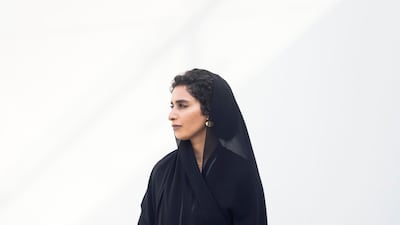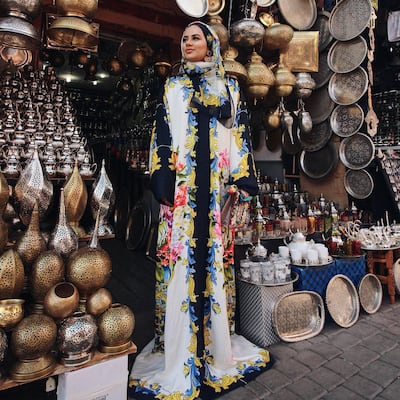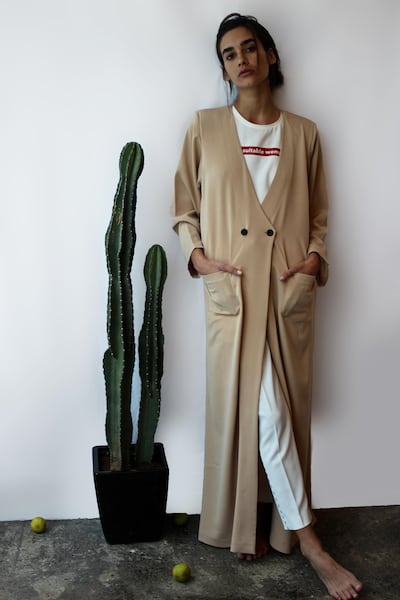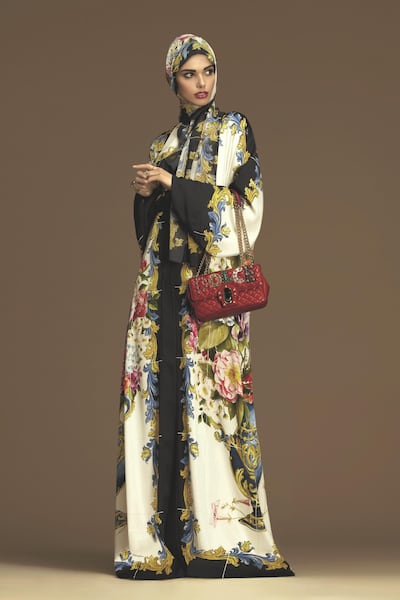“More than 90 per cent of pious Muslim women in the Muslim world do not wear abayas.” It’s the kind of statement often argued in liberal Muslim circles in the West, not in conservative countries in the Middle East that adhere to strict interpretations of Islamic Law. But this quote came out of Saudi Arabia this week, when Sheikh Abdullah Al-Mutlaq stated that women in the country should no longer be forced to wear the abaya.
Though this reflects his opinion, and doesn’t directly signal a change in legal policy, Al-Mutlaq is no Twitter activist looking to stir up controversy. He’s a senior council member of Saudi Arabia’s highest religious body.
By law, Saudi women must wear the abaya in public places, although some cities in the country are more lenient than others. In Arab countries like the UAE, the abaya constitutes national dress, but many local women opt to wear Western clothing instead. The “religious” requirement of the garment is frequently contested, since the Quran mentions modesty in chapter 33:59 but doesn’t explicitly mandate that women wear black, floor-length robes.
As translated by Muhammad Marmaduke Pickthall, the verse states: “O Prophet! Tell thy wives and thy daughters and the women of the believers to draw their cloaks close round them (when they go abroad). That will be better, so that they may be recognised and not annoyed. Allah is ever forgiving, merciful.”
The difference between religion and culture is often misconstrued, explains Alia Khan, chairwoman and founder of the Islamic Fashion and Design Council (IFDC). “I want to first make it clear that IFDC is not a religious organisation; we don’t try to interfere in people's religious opinions, and we respect the journey that they’re on,” she says. “The abaya, from our perspective, is not necessarily a religious garment. It’s a cultural garment, more recognised in the Middle East, that allows you to comply with modesty-based guidelines.”
Khan speculates that if Al-Mutlaq’s recommendations were to cause a change in Saudi Arabia’s law, and dress codes were subject to looser interpretations, then the country’s female residents would invariably become more experimental with fashion. “I think it would open doors, naturally, to Arab women being more open to wearing whatever they’re comfortable with, that might replace the abaya. I think there is going to be a lot more flexibility and we’re going to see a lot more creativity when it comes to wearing modest clothing in this region,” she says.
Khan’s IFDC recruits and promotes talent in the realm of modest fashion, and last year, some of its designers showcased their work on catwalks in Italy and France. Next month, IFDC will be hosting a fashion-week alternative in Dubai called Pret-a-Cover Buyer’s Lane, featuring modest-fashion brands from around the world – many of whom give their own updates to the traditional abaya silhouette.
One such creative is Hatem Alakeel, a Saudi thobe and abaya designer – though he is hesitant about calling his pieces “abayas,” lest they be misconceived. “We don’t want to compartmentalise. ‘Islamic’ fashion is like any other fashion,” he explains. Decadent textures, embroidered motifs and unique sleeve and collar details feature heavily in Alakeel’s womenswear collections, where open, cape-like cover-ups are stylish, versatile and wearable even by Western standards. “It’s no longer called an abaya; call it a fashion item. This is how I see the abaya in fashion. It’s quite regal and very glamorous, and this is the direction many designers are taking,” he says.
The designer abaya has flourished in recent years, with luxury brands like Dolce and Gabbana and Carolina Herrera creating collections specifically for the Middle East. Many Arab abaya designers are also deviating from classic blacks, and contemporary abayas feature open fronts, and woven fabrics in neutral and jewel-toned shades. Some are decorated with athletic-inspired stripes, pearl beads and floral embroidery.
The trending abaya in the Gulf today is a far cry from the heavy black cloak of the past.
Furthermore, many Arab women seeking to dress modestly are bypassing the abaya completely, and have taken to wearing shirt-and-trouser sets, or long dresses, instead. For them, shopping for clothing has become considerably easier in the last couple of years, since modest wear has become an international trend. E-commerce platforms like The Modist, which sell curated luxury designs for clients who like to cover up, are a testament to the breadth of the modest-wear movement.
Alakeel emphasises the strong standing that fashion has in the region, particularly in Saudi Arabia, where women born into wealth are well versed in international trends, and privy to the most expensive and exclusive fashion collections and events. "I had the pleasure of knowing Isabella Blow, the [late] fashion editor at Tatler, and she told me: 'Hatem, I've been to weddings in Riyadh where the haute couture that I saw on guests had been shown just two days earlier in Paris,'" he recalls. Alakeel believes that the outside world has misconceptions about Saudi women and their fashion credentials, because they always appear in public shrouded in black. "Under the veil there is a lot that many people don't know. Once they remove the veil, the rest of the world will be able to see what we have," he says.
Although abayas have evolved over the years, not everyone in the kingdom is content with having to wear them, and Alakeel says that a Saudi dress-code reform wouldn’t come as a shock. “None of us are surprised, because this is something that has been in the pipeline, and many women have been complaining about it, because the issue here is that people should have the freedom to [choose],” he says. “We need to have a more moderate Saudi and this is the direction we are headed in. It’s progress.”
But there are, as ever, two sides to every story. While some women find the garment cumbersome, others have grown accustomed to it, and would continue to wear it even if it were no longer obligatory by law. Saudi-born Nour Al-Tamimi, founder of urban sneaker brand The Nou Project, may not always wear the abaya when she’s in Dubai, but says she enjoys putting it on when she visits her home country. “It is special to be different from the rest of the world in a way. I think the abaya is beautiful and it emphasises the culture, just like in India where they wear saris,” she says.
Far from a symbol of repression, as it might be perceived in certain parts of the world, the abaya is viewed by many proud wearers as a symbol of their heritage. “To me, the abaya is what the kimono is to Japan; it’s part of the culture,” says Saudi clothing designer Arwa Al Banawi.
Perhaps unexpectedly, the garment has inspired many of Banawi’s more laid back athleisure pieces. “I took it as a challenge to modernise it and to make it cool and easy to wear, even for non-Khaleeji women. I have pieces that are sold as a coat but can also be worn as a abaya because the most important thing, as the sheikh said, is to be conservative.”
While they hold the abaya close to heart, both designers agree that the sheikh’s statements are a step in the right direction. “I think it is positive because it’s always nice to have the choice, since it allows one to embrace this tradition rather than feel it is being forced,” says Al-Tamimi.
Whether or not one sheikh’s recommendation to absolve Saudi women from wearing the abaya will lead to a change in legislation remains to be seen. But even if it does, Khan believes that the overall silhouette and intent of the abaya will forever be relevant in the realm of modest fashion. “I don’t think the abaya will ever go away,” she says. “It’s just such a likeable garment, and such a comfortable and convenient outer garment. And, it allows a woman to express herself, because abayas are getting more and more creative, elegant and well-designed.”
The abaya through the ages
Fashion historian Reem El Mutwallli has a PhD in Islamic art and architecture, has written a number of books and been responsible for curating exhibitions and collections at the Cultural Foundation, Abu Dhabi. She has also amassed a collection of Emirati dresses that reflect the country’s history. She explains how the silhouette of the abaya has evolved in the UAE.
Pre-Oil period: The traditional Bedouin abaya was a square-shaped black wool overgarment adorned with a wide gold trim at the central neckline. It could only really be afforded by those at the higher echelons of society, such as the wives of sheikhs or merchants. For the general public, the large double-width black Shayla, or headscarf, was used to engulf the upper part of the body, playing the role of the abaya.
1970s: Different weights of black silk became popular and, in time, less opaque. By the end of the 1970s, the abayas worn at social functions become more sheer. It draped from the back of the head, was bunched at the waist and tucked under the arm, showing off the lower skirt part of whatever was being worn underneath.
1980s: The shoulder abaya was introduced from Saudi Arabia. This saw the introduction of a basic full-length black sleeved cloak that covered the body, alongside the narrower black shayla that covered the head. Black fabrics in different weights and sheerness were experimented with, and various adornment techniques were introduced.
1990s: The same basic shape of the abaya continued, with displays of more ostentatious lace, heavy embroidery, iron-on rhinestones (usually all in black) and some sparkle every now and then, as the abaya and shayla became paired as ensembles. The new 'umaniyah' (from Oman, as it resembled the tunics worn by Omani men), became widely used. This is also known as the Islamic abaya as it was completely closed at the front and could be slipped on over the head.
2000-2010: Heavy experimentation in new cuts and styles began, resulting in bizarre and at times very flamboyant shapes. Butterflies, bats or anything with wings in multi-layers became all the rage. Some also acquired a waistline through different styles of narrow and wide belts to empathise body shape, and hooded extensions were introduced in attempts to blend with popular Western attire.
2010 - Present-day: Experimentation with colored shaylas and abayas has become elevated, with natural fabrics and high-end designs that express individuality, functionality and an overall awareness of global and environmental changes. Emerging local designers begin to look beyond Western fashion labels for inspiration, developing their own signature styles based on a global fashion heritage. Today's abaya has evolved to mean more than a piece of clothing covering other garments. Detaching itself from earlier attributes, symbolism or the concept of mere functionality, the abaya has acquired a standing of its own, thus becoming a fundamental fashion piece, and an added value to an overall outfit. In shopping centers, women of every age can be seen wearing beautifully decorated abayas that do not necessarily hide the outfit anymore, and it is now quite common to see them worn open in the front in the guise of a coat.







